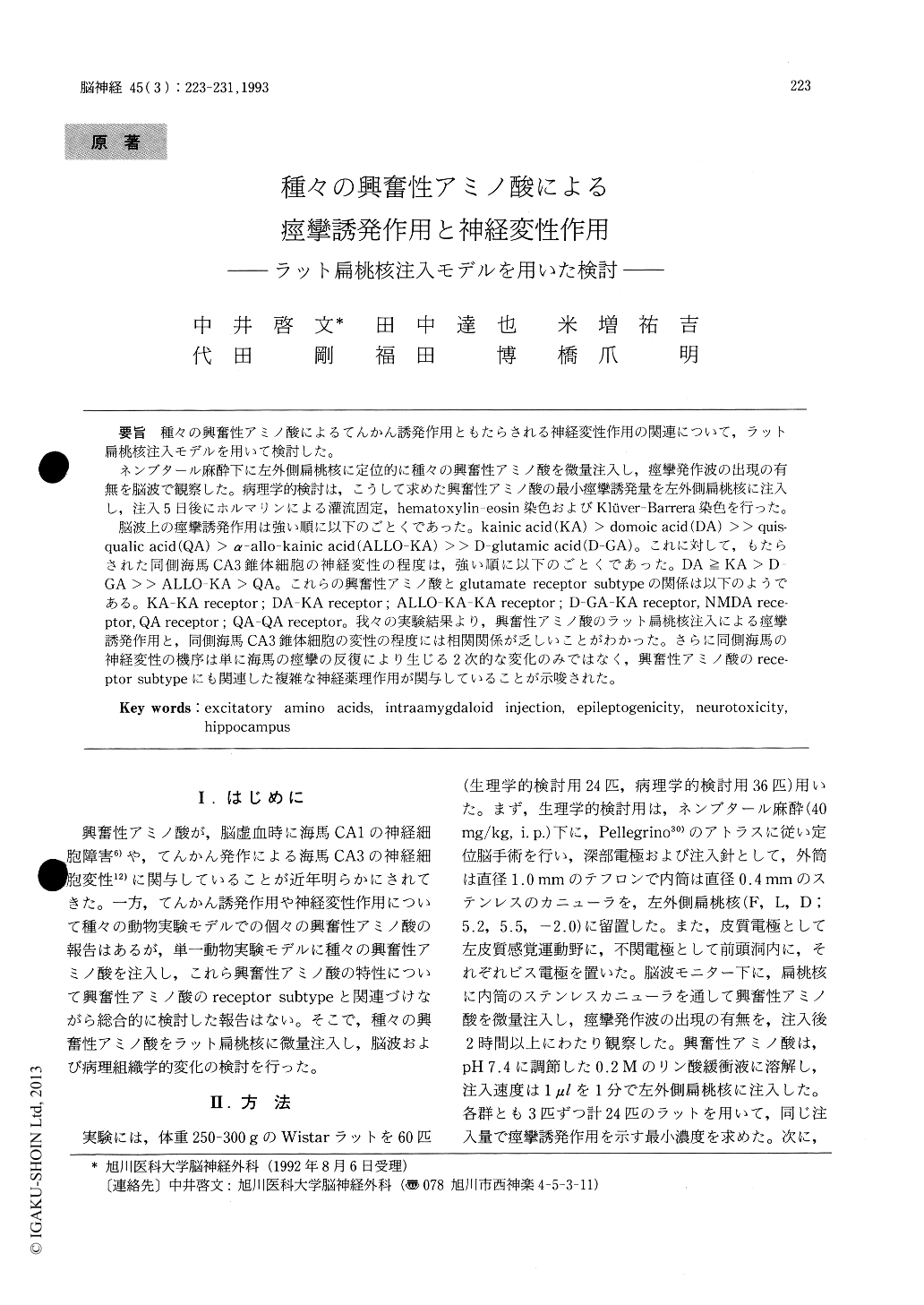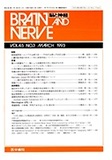Japanese
English
- 有料閲覧
- Abstract 文献概要
- 1ページ目 Look Inside
種々の興奮性アミノ酸によるてんかん誘発作用ともたらされる神経変性作用の関連について,ラット扁桃核注入モデルを用いて検討した。
ネンブタール麻酔下に左外側扁桃核に定位的に種々の興奮性アミノ酸を微量注入し,痙攣発作波の出現の有無を脳波で観察した。病理学的検討は,こうして求めた興奮性アミノ酸の最小痙攣誘発量を左外側扁桃核に注入し,注入5日後にホルマリンによる灌流固定,hematoxylin-eosin染色およびKlüver-Barrera染色を行った。
脳波上の痙攣誘発作用は強い順に以下のごとくであった。kainic acid(KA>domoic acid(DA)>>quis—qualic acid(QA)>α-allo-kainic acid(ALLO-A)>>D-glutamic acid(D-GA)。これに対して,もたらされた同側海馬CA3錐体細胞の神経変性の程度は,強い順に以下のごとくであった。DA≧KA>D‐GA>>ALLO-KA>QA。これらの興奮性アミノ酸とglutamate receptor subtypeの関係は以下のようである。KA-KA receptor:DA-KA receptor:ALLO-KA-KA receptor:D-GA-KA receptor, NMDA rece—ptor, QA receptor:QA-QA receptor。我々の実験結果より,興奮性アミノ酸のラット扁桃核注入による痙攣誘発作用と,同側海馬CA3錐体細胞の変性の程度には相関関係が乏しいことがわかった。さらに同側海馬の神経変性の機序は単に海馬の痙攣の反復により生じる2次的な変化のみではなく,興奮性アミノ酸のrece—ptor subtypeにも関連した複雑な神経薬理作用が関与していることが示唆された。
The electroencephalographic and histopatho-logical changes following intra-amygdaloid injec-tion of excitatory amino acids were examined in rats. Limbic seizure status was induced after injec-tion of kainic acid (KA) , domoic acid (DA) , quis-qualic acid (QA), α-allo-kainic acid (ALLO-KA) and D-glutamic acid (D-GA) . The excitatory effect was found to be in the following order : KA > DA>>QA>ALLO-KA>> D-GA. D-GA caused only a transient paroxysmal discharge on EEG. However, seizure was not induced by an injection of L-glutamic acid (L-GA), D-aspartic acid (D-AA) and L-aspartic acid (L-AA) . The minimum epileptogenic doses of these amino acids were defined and intra-amygdaloid injection of these doses were performed. Seven days following the injections, histopathological study was perfor-med. These injection resulted in various degree of degeneration and neuronal cell loss of the pyramidalcells in the ipsilateral hippocampus in the following order of severity : DA≧KA>D-GA>ALLO-KA>QA. These results indicate absence of corre-lation between epileptogenicity and histopatho-logical changes. Non epileptogenic amino acids induced no pathological changes of hippocampus or the injected site. These results suggest that the severity of hippocampal damage induced by intra-amygdaloid injection of amino acids depends not only on the magnitude of the induced limbic seizure status but also on the difference of neurophar-macological properties of those amino acids in terms of the interaction with their receptors. Fur-ther studies are necessary to elucidate the mecha-nism of actions of these excitatory amino acids in relation to their receptor subtypes.

Copyright © 1993, Igaku-Shoin Ltd. All rights reserved.


